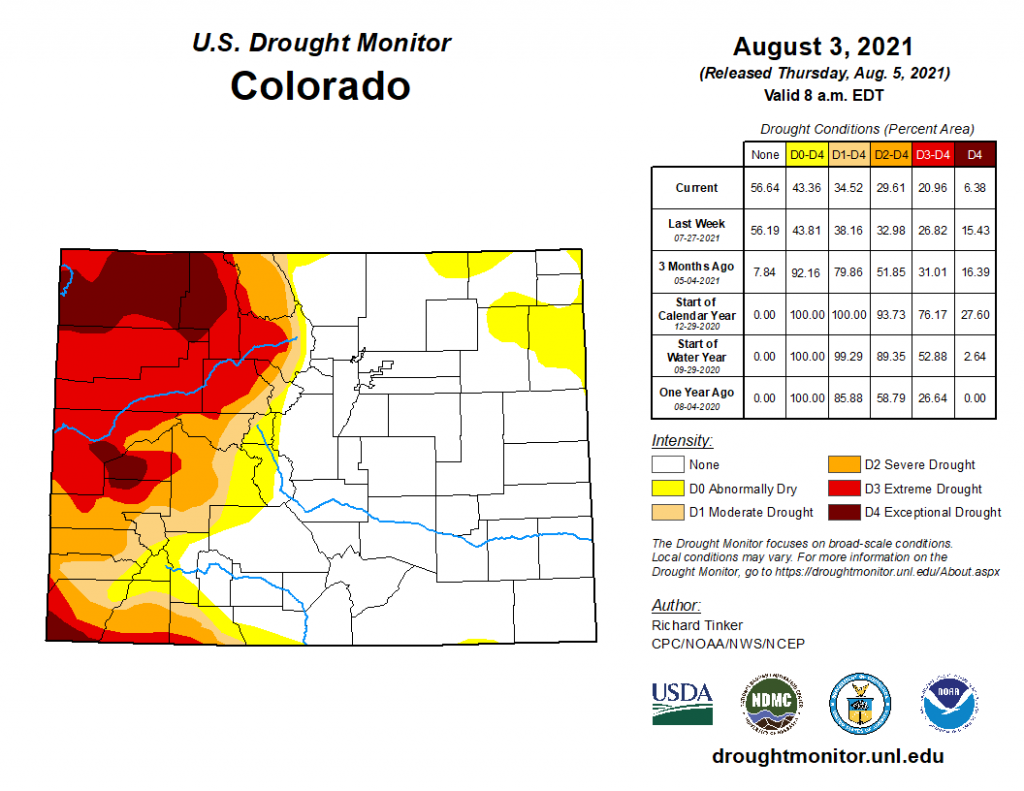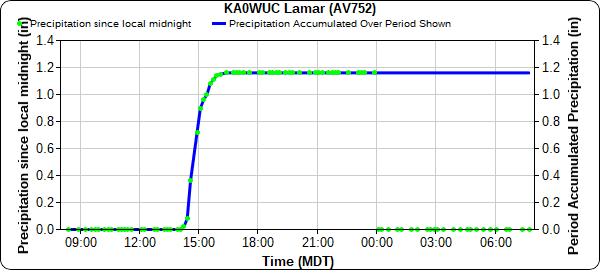Issue Date: Saturday, August 7th, 2021
Issue Time: 10:15 AM MDT
Summary:
Yesterday saw widespread storm coverage across much of Northern and Central Colorado, though limited available moisture resulted in little rainfall accumulation. Instead, strong thunderstorm and non-thunderstorm winds were the main threat. High winds were reported in Burlington (70mph) on the Eastern Plains all the way to Rangely (45 mph) on the Western Slope, with many high wind reports scattered in between. For the fires burning in the Northern Mountains, several rounds of thunderstorms brought wind gusts up to 40 mph, which exacerbated fire weather behavior. Thankfully, there were also minor rainfall accumulations between 0.05-0.20 inches, especially on the Morgan Creek fire to hinder fire advancement.
The Northern Mountains, and Northern Front Range Mountains in particular, received some notable precipitation yesterday. A flash flood warning was issued in the evening for Larimer County, including the Cameron Peak burn scar. A CoCoRaHS observer in Rustic reported up to 0.48 inches of precipitation, and a bit southeast in Glen Haven up to 0.64 inches were reported. No flooding or debris flows were reported yesterday as a result of heavy rain over the region.
Several locations along the Urban Corridor also received light precipitation, though not enough to register above to 0.25 inch threshold in the MetStormLive grids in the SPM. In addition to the windy day, smoke in the air and reduced air quality was the main concern for the Front Range and Urban Corridor. For rainfall estimates in your area, including antecedent conditions, check out the State Precipitation Map below.





